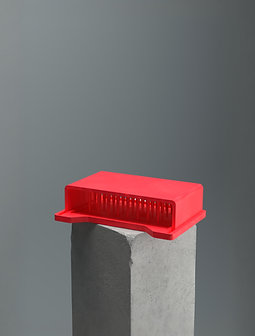3 hours ago4 min read
4 days ago4 min read

Updated: May 25

Biomedical science explores the frontiers of biology and medicine, investigating life processes, disease pathways, and innovative treatments. Central to this pursuit is a wide array of specialized biomedical lab tools. Without the right biomedical laboratory equipment, the groundbreaking discoveries that advance human health would not be possible.
This guide provides a comprehensive overview of the essential biomedical lab equipment found in modern research settings, from foundational equipment to sophisticated analytical instruments.
Certain pieces of biomedical laboratory equipment are fundamental to nearly all research endeavors:
Microscopes: Perhaps the most iconic biomedical lab tools, microscopes allow scientists to visualize cells, tissues, and microorganisms. Types range from basic light microscopes to advanced confocal and electron microscopes for high-resolution imaging.
Centrifuges: Essential tools for biomedical labs, centrifuges use high-speed rotation to separate components in liquid samples based on density, critical for isolating cells, DNA, and proteins.
Incubators: These provide controlled environments (temperature, humidity, CO2) necessary for growing and maintaining cell cultures, a common task requiring specific biomedical lab tools.
Autoclaves/Sterilizers: Ensuring sterility is paramount. Autoclaves use high-pressure steam to sterilize glassware, media, and other biomedical lab equipment, preventing experimental contamination.
Pipettes and Liquid Handling Systems: Precision is key. Micropipettes and automated systems are indispensable biomedical tools for accurately measuring and transferring liquids.
Balances and Scales: Accurate weighing of reagents is crucial for preparing solutions, making analytical balances vital biomedical lab tools.
Basic Glassware/Plasticware: Beakers, flasks, test tubes, and Petri dishes form the basic set of consumable tools for biomedical labs, used for countless experimental procedures.
Investigating life at the molecular level requires specialized biomedical lab tools:
PCR Machines (Thermal Cyclers): These machines amplify specific DNA or RNA sequences through the Polymerase Chain Reaction, making them cornerstone biomedical tools for genetic analysis.
Gel Electrophoresis Systems: Used to separate molecules like DNA, RNA, and proteins based on size and charge, a standard analysis performed with this type of biomedical laboratory equipment.
Sequencers (Including NGS): Advanced biomedical lab tools that determine the precise sequence of DNA or RNA, crucial for genomics and understanding genetic contributions to disease.
Spectrophotometers/Microplate Readers: These analytical tools for biomedical labs measure light absorbance or emission to quantify substance concentrations or monitor reactions in assays.
Detailed characterization and quantification rely on sophisticated analytical biomedical lab tools:
Flow Cytometers: Analyze and sort individual cells based on their physical and fluorescent characteristics, powerful biomedical lab tools for immunology and cell biology.
Mass Spectrometers: Identify and quantify molecules by their mass-to-charge ratio, essential biomedical laboratory equipment for proteomics, metabolomics, and drug discovery.
Immunoassay Analyzers: Detect specific biological molecules using antibody-based techniques (like ELISA), common diagnostic and research biomedical lab tools.
Bioinformatics Software: As data volumes explode, software for managing, analyzing, and visualizing complex biological data sets has become an essential digital biomedical tool.

Beyond general equipment, specific research areas utilize unique biomedical lab tools. A prime example comes from cell migration studies using the scratch assay:
The Scratch Assay Technique: A common in vitro method used in biomedical labs to study how cells move collectively, often to model wound healing or cancer cell invasion. A gap ("scratch") is made in a cell layer, and closure is monitored.
Improving the Assay with Specialized Tools: Traditional manual scratching lacks consistency. Innovative biomedical lab tools like CLYTE's CellCut 3.0 address this. This device standardizes scratch creation in multi-well plates, offering:
Reproducibility: Delivers consistent wound widths, making it a more reliable biomedical lab tool for migration studies.
Efficiency: Increases throughput by allowing rapid, uniform scratching across many samples.
Enhanced Data Quality: Consistent scratches improve quantitative analysis and compatibility with imaging systems – key benefits for a modern biomedical tool.
Utility: An invaluable tool for biomedical labs studying cancer, wound healing, and drug effects on cell migration.
The diverse range of biomedical lab tools—from basic glassware to automated sequencers and specialized devices like CellCut 3.0—is fundamental to progress in understanding health and disease. This essential biomedical laboratory equipment enables scientists to conduct rigorous experiments, generate reliable data, and ultimately drive the innovations that shape the future of medicine. Investing in and mastering these tools for biomedical labs remains critical for continued advancement in the field.
What are some more useful biomedical tools that you know?!
References
Unlocking Medical Breakthroughs: The Power of Biomedical Research Tools https://www.clyte.tech/post/unlocking-medical-breakthroughs-the-power-of-biomedical-research-tools
Tools and Techniques – Biomedical Beat Blog – National Institute of General Medical Sciences https://biobeat.nigms.nih.gov/category/tools-and-techniques/
Resources and Equipment | Biomedical Engineering - San Jose State University https://www.sjsu.edu/bme/research/resources-equipment.php
What Equipment Is Needed For a Medical Lab? | Block Scientific https://www.blockscientific.com/what-equipment-is-needed-for-a-medical-lab
Guide to Medical Lab Instruments and Equipment - Microlit USA https://www.microlit.us/what-are-the-different-types-of-medical-lab-instruments/
Essential Medical Lab Equipment List and Brands for a Quality Laboratory in 2024 https://en.seamaty.com/index.php?s=/sys/582.html
20 Most Common Types of Biology Laboratory Equipment https://modernbio.com/blog/20-most-common-types-of-biology-laboratory-equipment/
A High-Throughput Device for Consistent and Reproducible Wounds in In Vitro Scratch Assays: Introducing CellCut https://www.clyte.tech/post/a-high-throughput-device-for-consistent-and-reproducible-wounds-in-in-vitro-scratch-assays-introduc
Revolutionizing In Vitro Scratch Assays: How CellCut is Setting a New Standard in Cell Migration Research https://www.clyte.tech/post/revolutionizing-in-vitro-scratch-assays-how-cellcut-is-a-new-standard-in-cell-migration-research

